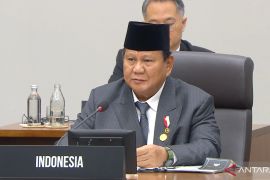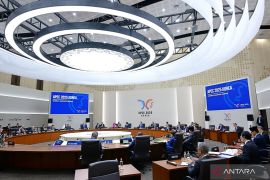Jakarta, Oct 2 (ANTARA News) - Officials from APEC member economies raced to mitigate the explosion of climate-driven catastrophes that are putting tens of millions of lives in the Asia-Pacific at risk and the rattled trading landscape under greater threat.
It was stated in a press release issued by the APEC Secretariat, received here on Tuesday.
Senior disaster management officials accelerated work in APEC to build multi-hazard early warning systems during technical consultations in Kokopo, the capital of Papua New Guinea`s East New Britain Province.
They considered the impact of pervasive disasters ranging from the volcanic eruptions that destroyed the former capital, Rabaul, to Indonesia`s Sulawesi earthquake and tsunami.
Officials also took into account the increase in extreme weather events due to climate change, which compounds disaster risk region-wide.
"Early warning is vital for us to direct often finite amounts of resources to support timely, relevant, and appropriate actions, starting with a persistent scanning of the horizon for hazards," Papua New Guinea Minister of Inter-Government Relations Kevin Isifu stated.
"We are ramping up efforts in APEC to prepare for, mitigate, and prevent future tragedies. Safeguarding our people and growth is our common imperative as climate risks escalate," Minister Isifu stated.
Impetus for this initiative is further underpinned by severe flooding in the eastern United States caused by Hurricane Florence, Super Typhoon Mangkhut that hit the Pacific islands and East Asia, and the onslaught of disasters in Japan destabilizing communities and supply chains.
Officials are focused on boosting hazard monitoring, efficient use of digital tools, and alerts that result in prompt and effective responses at the local, domestic, and international levels.
The goal is to mobilize people and resources in ways that can help to save lives and keep infrastructure, businesses, and trade going when they are needed the most.
Efforts include building an integrated platform in APEC to exchange and synthesize research, data, and analysis for improving forecasting.
Moreover, the initiative aims to strengthen disaster risk communications strategies and targeted information dissemination, with attention to messaging scope, tone, and audience reach supported by apps and social media.
"The resilience of services and goods flows, and the jobs and communities they support, can benefit a lot from pre-disaster, community-level engagement to raise understanding of risks and warning signs," Chair of the APEC Emergency Preparedness Working Group Li Wei-sen stated.
"We are seeking to facilitate the relaying of warning messages to the right locations, at the right times, to limit harm in at-risk areas as well as avoid inciting unnecessary concern in those which are not," Li noted.
He added, an important next step in APEC is finding ways to link centralized and local warning systems to address distance and connectivity challenges, leveraging digital development.
Telecommunications and information officials in APEC are meanwhile advancing the potential for "Internet of Things" technology, or the application of data collected by a network of devices, such as mobile devices, to optimize the region`s disaster monitoring systems at a lower cost.
"The beauty of the `Internet of Things` is that it can help to better predict natural calamities but does not require expensive new monitoring equipment or significant overhaul of old systems," Morris Lin, Chair of the APEC Telecommunications and Information Working Group, stated.
"We are coordinating in APEC to enable economies to deploy multi-hazard monitoring and warning systems based on small-scale sensors communicating between each other, bolstering existing capacities," he stated.
He further noted that the application can greatly contain shocks, as extreme weather becomes a regular occurrence in the APEC region.
(T.Y012/INE/O001)
EDITED BY INE
(T.Y012/B/KR-BSR/O001) 02-10-2018 14:25:24
Reporter: Yuni Arisandy Sinaga
Editor: Fardah Assegaf
Copyright © ANTARA 2018











